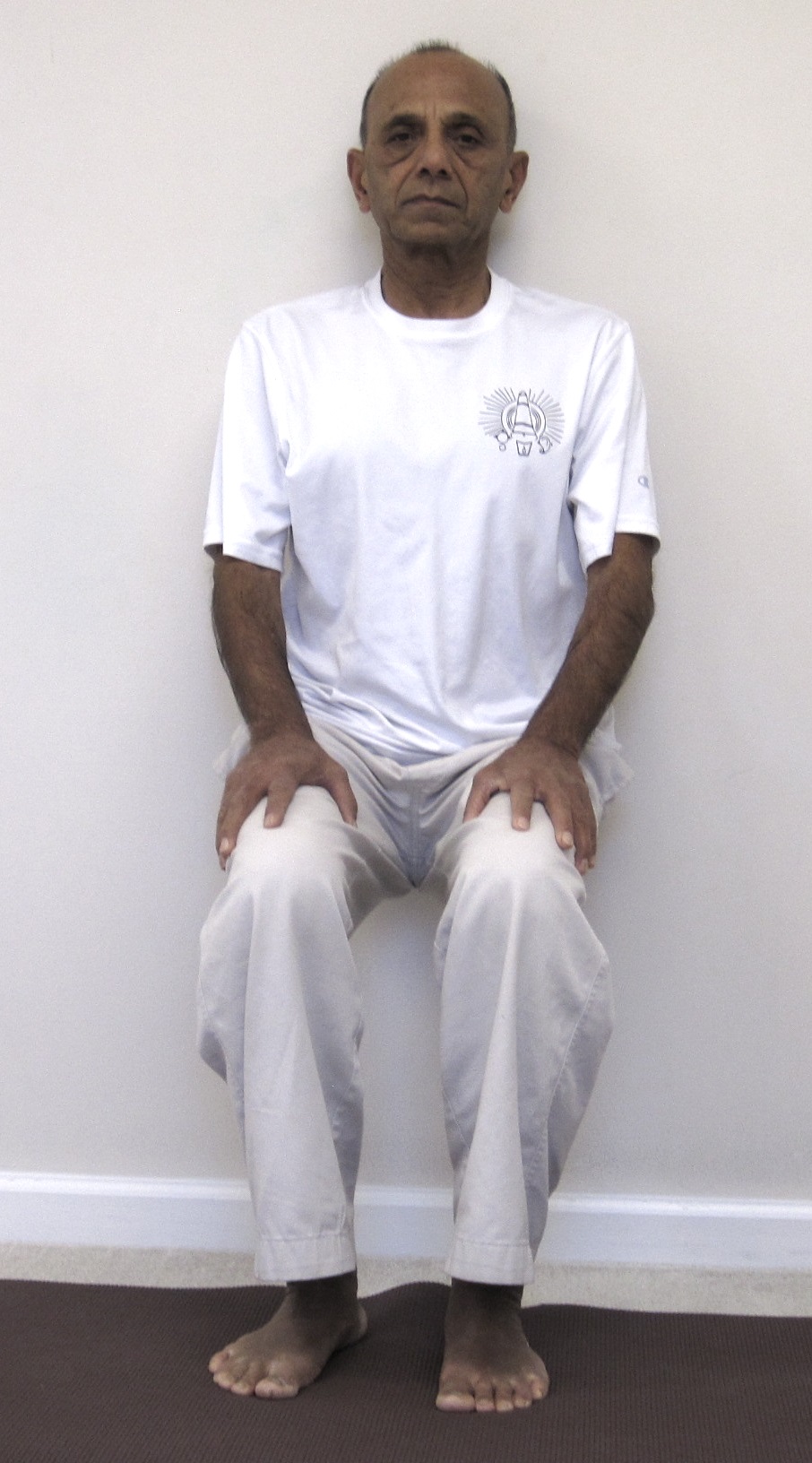
Virtual chair against wall
This post (part 2) is a continuation on the theme of presenting asanas that are very effective in building strength and flexibility in the quads. Please visit the previous post (part 1) for more asanas.
Quads (short for quadriceps) are the group of four muscles in the top part of the thighs. Quads, in combination with the hamstrings (back of the thigh) provide an excellent support structure both for the knees as well as the spine. Strength and flexibility of the quads can usually translate to healthy knees and a strong spinal column.
Most people pay very little attention to the quads. In fact, many of my students realize how tight their quads are only when they try to do a certain yoga pose which involves these muscles.
Virtual chair against wall
Even though this is a very simple asana to practice, it is, in my opinion, perhaps the most effective in building strong upper thighs.
- Begin by resting the back, shoulders and the head against the wall, the feet about 10-12 inches away from the wall.
- Keep the feet and the knees parallel to each other, hip distance apart.
- Slowly begin to slide the back down the wall until the knees are bent at 90 degrees. Make any necessary adjustments to the position of the feet that will bring the thighs parallel to the floor. Place the hands on the knees or thighs. Optionally, you can raise the arms vertically up for a deeper stretch to the thighs.
- Stay in the pose for as long as it comfortable. After a short while, you may begin to feel a slight burning sensation in the upper thighs. This is normal and indicates that the quads are being worked on.
- To come out of the pose, gradually come back up to a standing position.
- When the body is back to a relaxed state, repeat the above steps one more time.
- Relax briefly either in Shavasana (on the back) or in a sitting position.
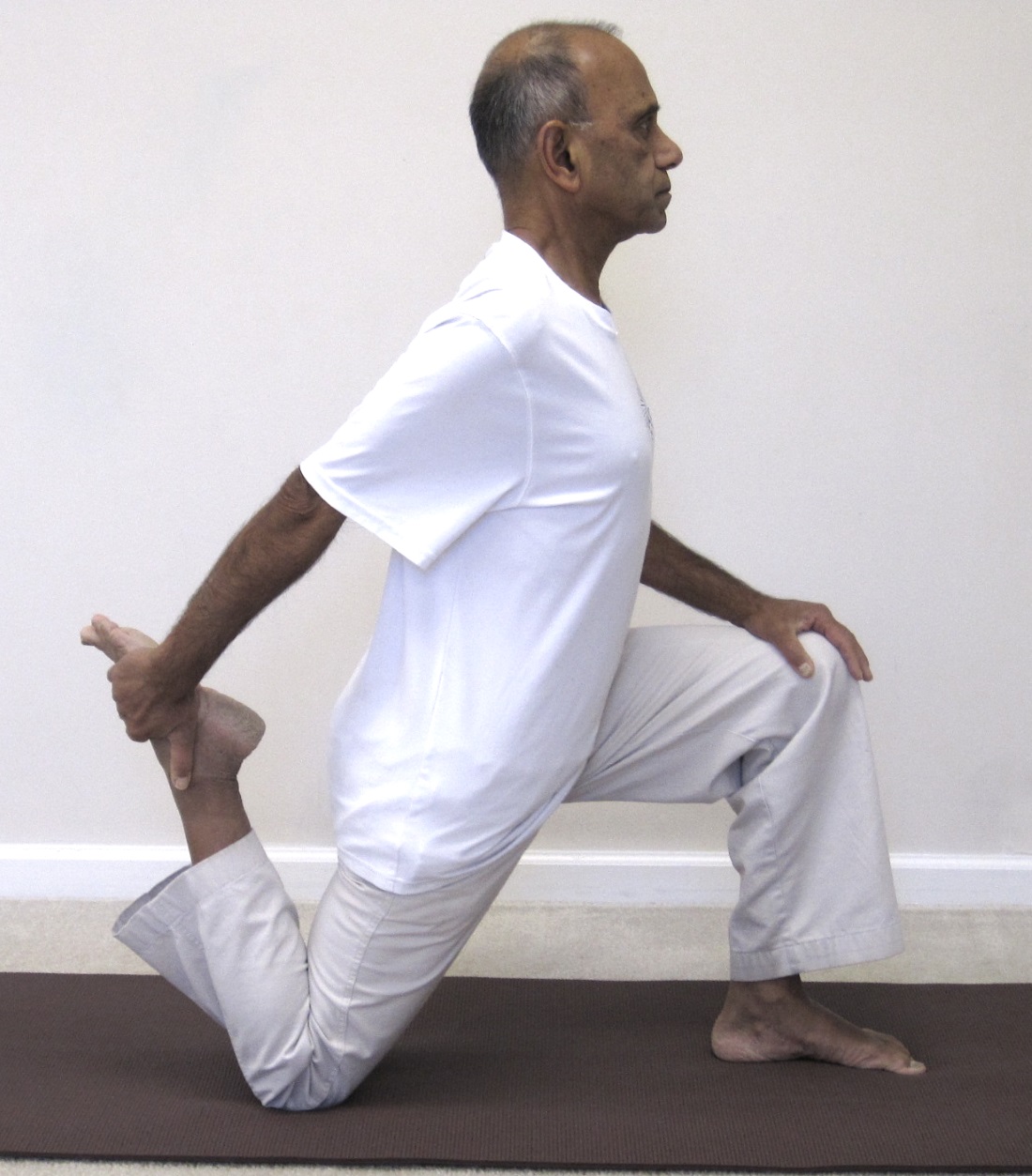
Lunge – holding ankle
Holding ankle from the lunge position
Lunge (aka Ashwa-sanchalana asana or horseback riding pose) is a common move in the popular Surya Namaskar (Sun Salutation) sequence. One of the variations to this pose that will help stretch the quads is to hold the ankle with one or both hands and bring the heel close to the buttocks.
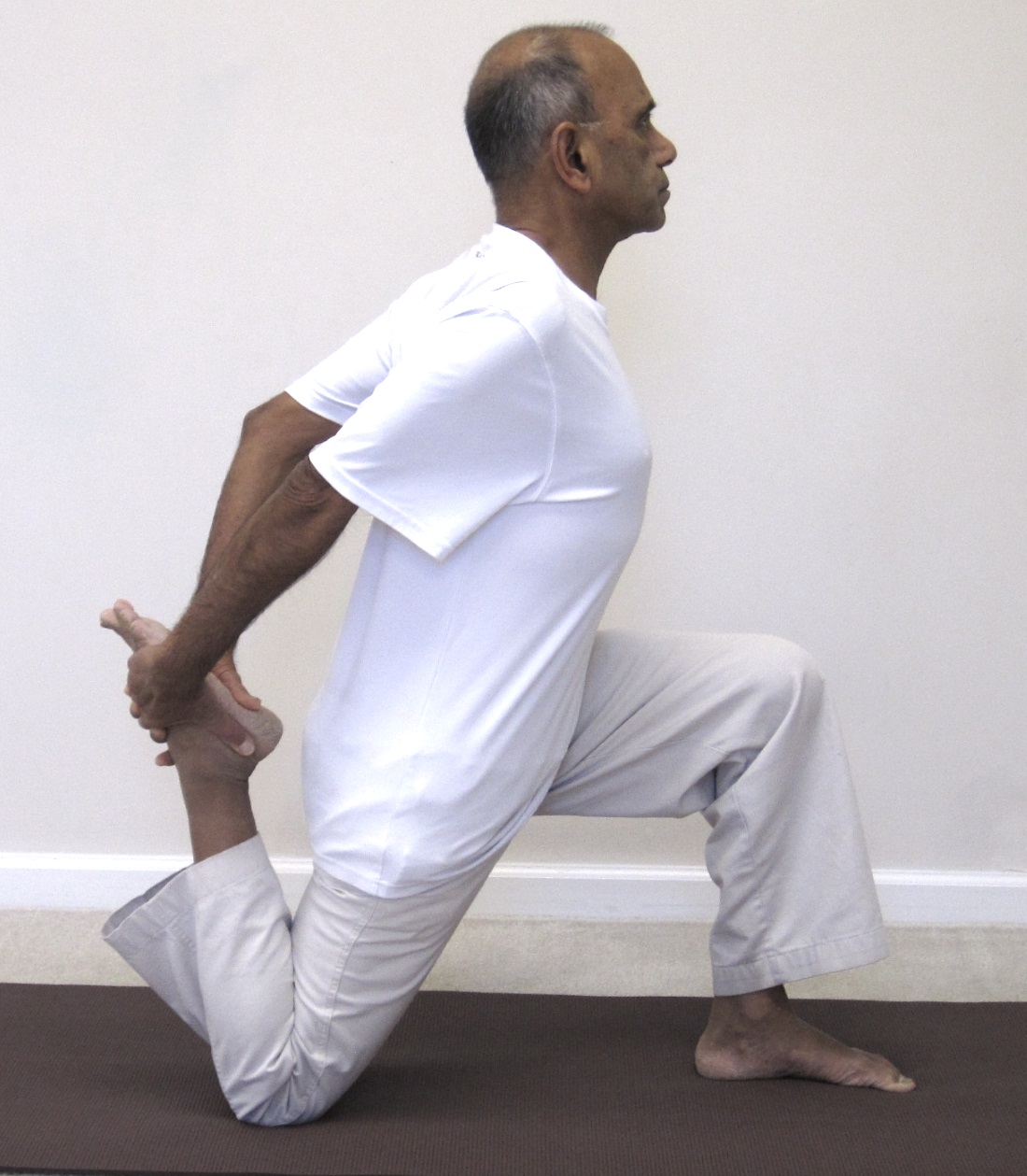
Holding ankle with two hands
If you plan to do this as a standalone pose, you may begin in the downward facing dog position and then lifting one foot up come into the lunge position by placing the foot between the palms. Alternatively, you can practice this variation as a part of the Sun Salutation sequence, as already mentioned above.
- When in the lunge position, for a deep stretch, try to place the knee as far back as comfortable.
- Lift the back foot up and try to hold the ankle with one hand. When the right foot is back, hold the right ankle with the left hand and place the right hand on the knee with the arm straight. Keep the shoulders rolled back with the spine upright, or even rolled back slightly.
- Repeat the stretch on the other side.
- If it feels comfortable, you may attempt to hold the ankle with both hands.
- If the floor feels too harsh for the knees, you may like to keep a folded blanket or a cushion under the knee before lifting the foot up.
- If you are unable to hold on to the ankle with the hands, you can use a strap to hold the ankle.
Natarajasana (Dancer’s Pose)
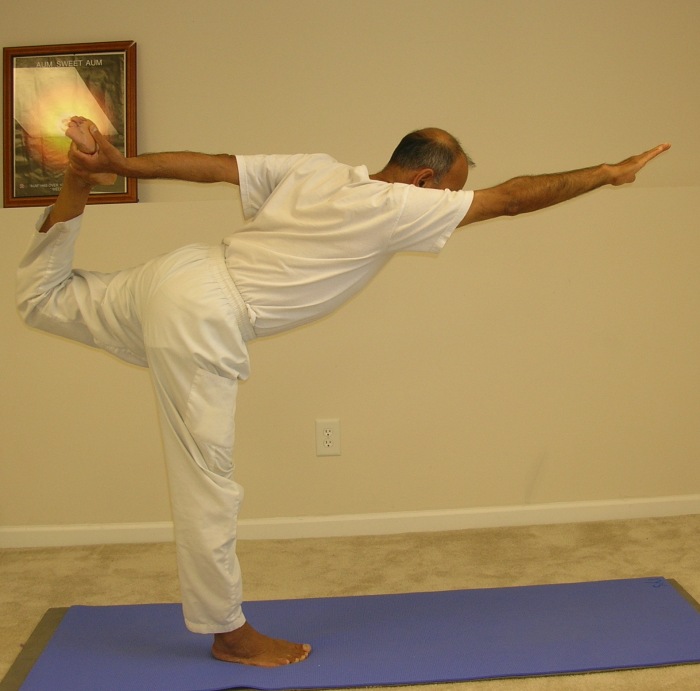
Natarajasana (Dancer’s Pose)
Nataraja (nata means a dancer and raja means the king or the lord), king-dancer, is the name of Lord Shiva (one of the trinity of Hindu gods – Shiva, Vishnu, and Brhma). In addition to being the dissolver of the universe, Shiva was also the Lord of dance and created over a hundred dances. Natarajasana – नटराजासन – is dedicated to Lord Shiva.
Natarajasana is an elegant-looking balancing pose which also involves a great stretch for the upper thighs (quads) as well as the spine and the shoulders.
Dhanurasana (Bow Pose)
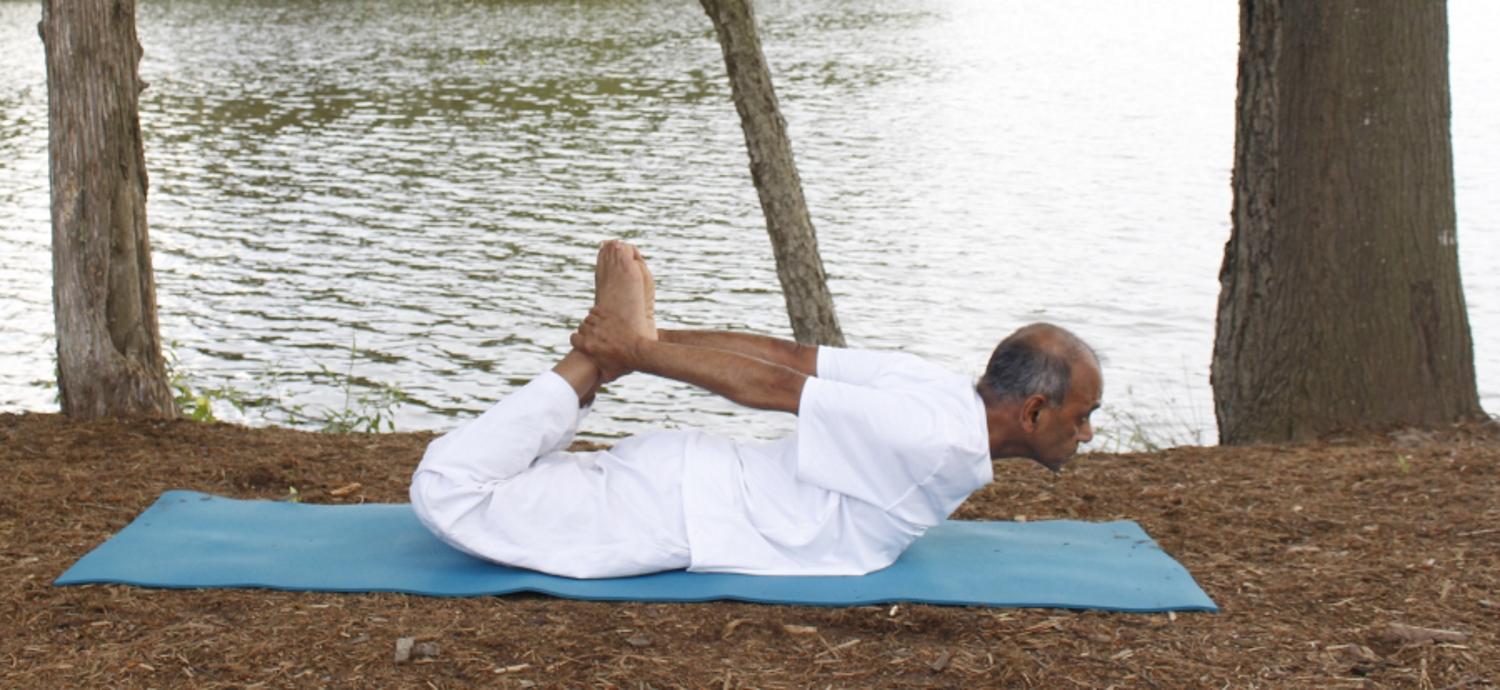
Dhanurasana (Bow Pose)
Dhanurasana (Bow Pose) is one of the most commonly practiced back bending asanas. In addition to stretching the spine, arms and shoulders, it also provides a nice stretch for the quads, especially when practiced with the knees and the feet close to each other.
Recent Comments